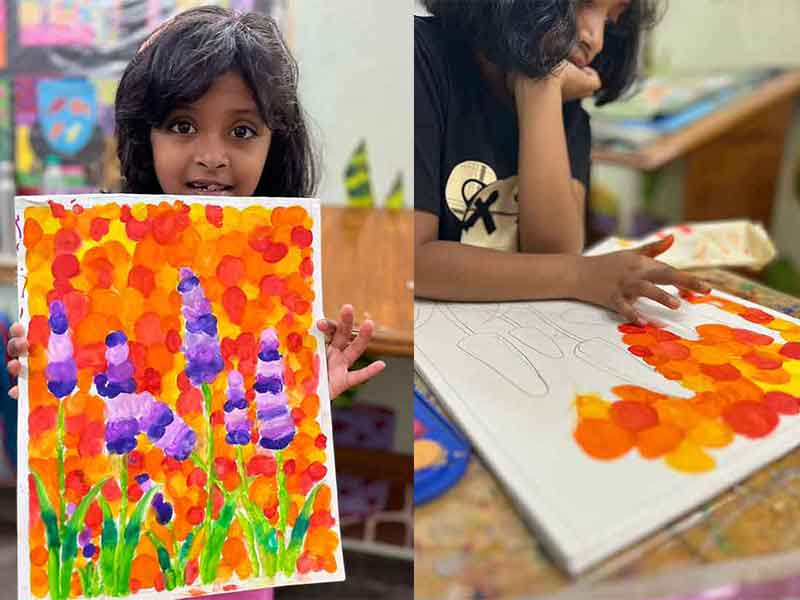Having been an art teacher myself for sometime, i would recommend finger painting as one of the most fascinating activities to teach young learners. First of all, it is not only an entertaining and exciting form of creativity but also an effective instrument for practicing many kinds of sensations and fine motor skills learned by children. Finger painting can be done through touch, color combination and best of all, the children get to be a little bit messy and most children seem to enjoy that!
Objective Of Finger Painting
The intended purpose of finger painting for first grade children is to develop individual imagination, self esteem, and dexterity by exploration. As you can imagine, the age of the kids that you select for your photoshoot is the age when children start becoming very curious, and they love exploring new ways of articulation. Finger painting allows this in its natural form because children can touch paint, colors and structures directly and learn through interaction with them.
Finger Painting Techniques for Kids
Admittedly, finger painting can be done almost easily but it is helpful to teach some basic exercises to precocious artists.
1. Dabbing and Stamping: Teach children how they can put their fingers into paint and then press them down onto paper to make some designs such as flowers, trees or even animals.
2. Color Mixing: I believe that finger painting is also an excellent chance to explain kids about mix of colors. For instance, mixing of red with yellow to give orange or blue with yellow to produce green. Let them play around with attempts at mixing color and let them find out what new colors they’ll come up with!
3. Texture Exploration: Teach children to work with different fingers of hand, for instance with palm or knuckles to give different textures. They can make swirls, dots, or lines by simply applying pressure to the paper by touch or drawing on the paper.
4. Layering Paint: To build up an angle in their artwork, guide the kids to decide on different colour or design. For instance, the child can paint the background with fingers and then paint objects such as trees or animals in other colour.
Finger Painting Activities for Kids
To keep the excitement going, here are a few themed finger painting activities that are perfect for 5-6 year-olds:
• Underwater World: For kids to practice finger painting, let them paint the picture of fish, seaweed, and corals used in an aquariums. Let them play with shades of blue, green, and purple then draw some texture for waves …or bubbles.
• Finger Paint Animals: For children, they can use their hands and fingerprints to learn shapes, for instance, handprint lion’s mane image or butterfly wings image. This aides them to have fun with animal related themes all the while working on shapes and colors interlocking them together.
• Seasonal Art: Grades, for example, during the autumn students can make trees with falling leaves: with the help of a paint brush to make the impression of fallen leaves in the wind. In Spring, they can use finger painting and develop a field of flowers.









Conclusion
For kids finger painting is not a concept where picture is everything- it is the fun of the making. Not only does it allow children to learn such things as color interaction and texture but it also benefits the child’s motor skills as well as their sensory education. This is why as an art teacher I find finger painting one of the best exercises that help young learners develop interest in art. It is chaotic, it is provocative, and it is completely educative process!
Interested in finger painting for kids or would like to know more about the advantages of finger painting sensory activities, this article will definitely come handy. It is time to let the little fingers have some fun and the creative juices to start to in full force!

